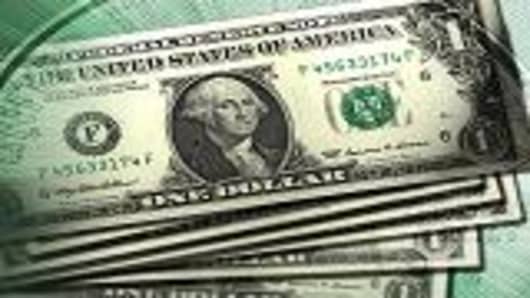The New York Fed is refusing to tell investigators how many billions of dollars it shipped to Iraq during the early days of the US invasion there, the special inspector general for Iraq reconstruction told CNBC Tuesday.
The Fed's lack of disclosure is making it difficult for the inspector general to follow the paper trail of billions of dollars that went missing in the chaotic rush to finance the Iraq occupation, and to determine how much of that money was stolen.
The New York Fed will not reveal details, the inspector general said, because the money initially came from an account at the Fed that was held on behalf of the people of Iraq and financed by cash from the Oil-for-Food program. Without authorization from the account holder, the Iraqi government itself, the inspector general's office was told it can't receive information about the account.
The problem is that critics of the Iraqi government believe highly placed officials there are among the people who may have made off with the money in the first place.
And some think that will make it highly unlikely the Iraqis will sign off on revealing the total dollar amount.
“My frustration is not with the New York Fed, it is with the Iraqis,” said Stuart Bowen Jr., the Special Inspector General for Iraq reconstruction (SIGIR). “They haven’t been sufficiently responsive.”
As for the New York Fed’s position of secrecy about the total amount transferred to Iraq, Bowen said, “We understand it in the sense that it's a foreign account and the account holder, according to their own rules, must provide permission.”
A spokesman for the New York Fed issued a statement to CNBC Tuesday evening. “The New York Fed has cooperated closely with SIGIR during its investigations and will continue to do so, in accordance with our policies related to disclosing customer account information, which generally includes receiving the consent of the account holder,” the spokesman said.
The impasse comes as the inspector general continues a massive and years-long investigation into what happened to billions of dollars in cash that left the New York Fed and vanished during the US occupation.
It was one of the largest shipments of cash in history. And the inspector general says that if the money was stolen, that would represent the largest heist in history.
According to a 2007 investigative report by Donald L. Bartlett and James B. Steele in Vanity Fair magazine, the cash originated from a little-known Fed vault located at 100 Orchard Street in East Rutherford, NJ, the largest depository of American currency in the world.
On Tuesday, June 22, 2004, the duo reported, unmanned vehicles loaded a tractor-trailer truck with pallets of $100 bills — weighing 30 tons and worth $2.4 billion — and that truck headed out onto New Jersey Route 17 bound for Andrews Air Force Base outside of Washington, DC.
There, the money was transferred to a C-130 transport plane and flown to Baghdad.
The cash transfer on that one day was just one of several such shipments of currency to Iraq, and the inspector general is trying to determine just how much was sent, and how much was stolen once it arrived in Iraq.
“We don’t have access to the Federal Reserve account to know how much money actually came out of the Fed,” said Jason Venner, the inspector general’s chief auditor. “They won’t tell us.”
Venner said that the inspector general plans to make a formal request of the Iraqi government to release the account information during a meeting in Jordan next week of the International Advisory and Monitoring Board, the body that oversees development funds for Iraq.
Determining the total amount of money that has gone missing — and who was responsible for losing it — is much more than an academic question. Some Iraqi government officials have threatened to sue the United States over the missing money, arguing that the government had a fiduciary obligation to apply appropriate financial controls, and is therefore liable for any losses.
If that effort overcomes the many legal challenges it would face, the lost money would have to be replaced — at the US taxpayers’ expense.



